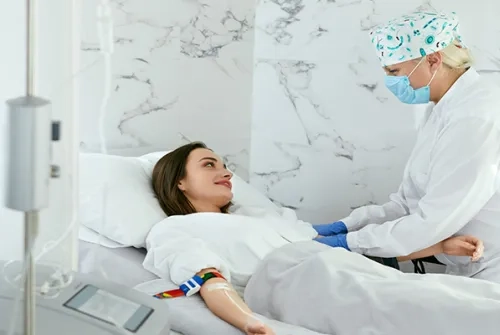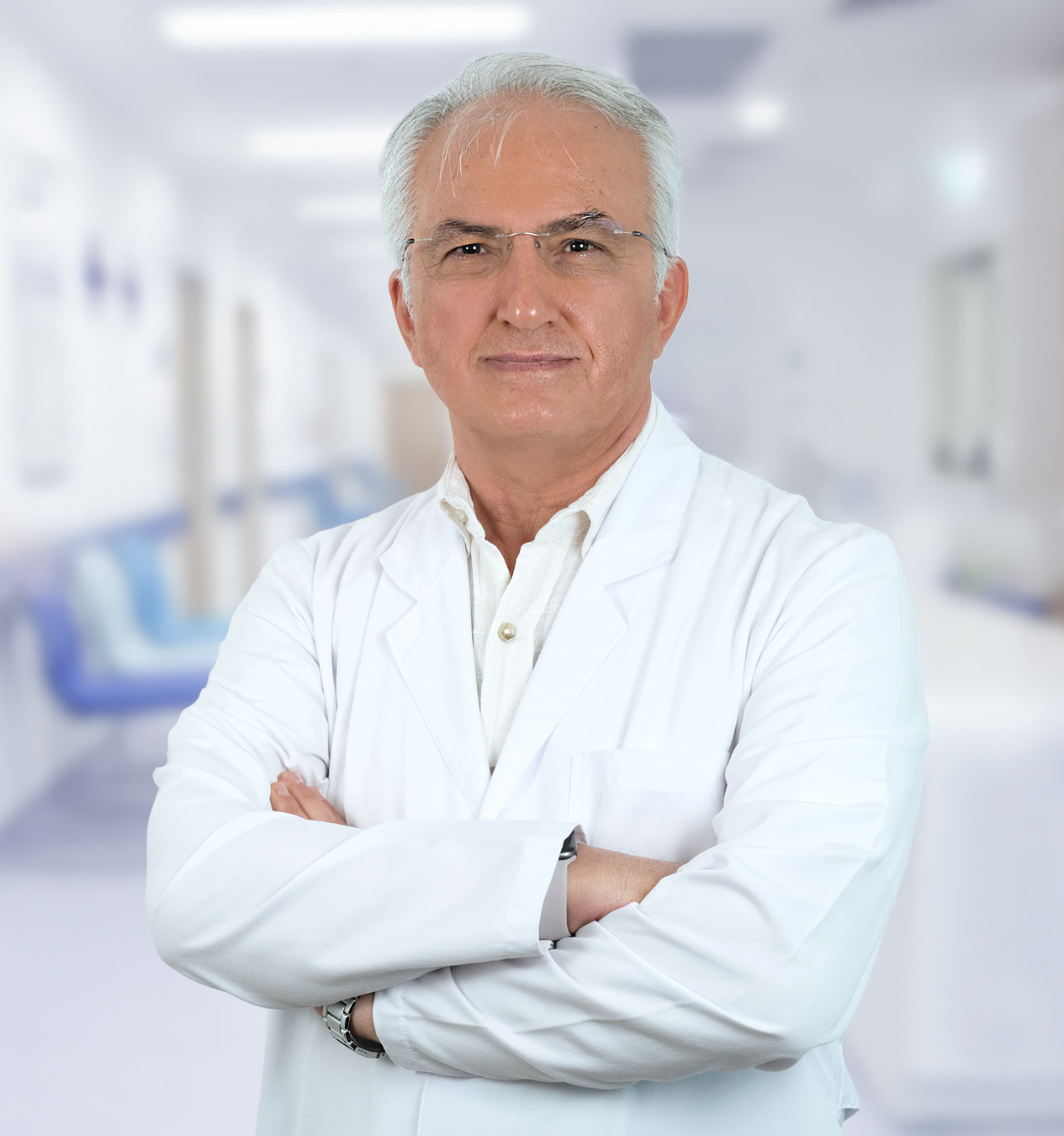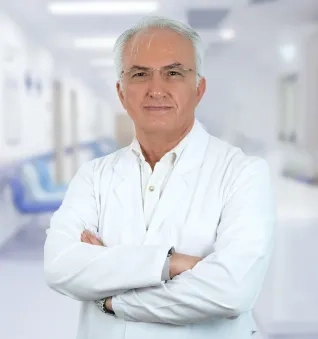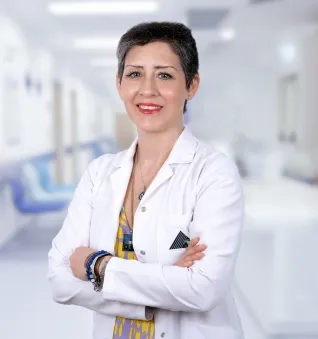Alo Yeditepe
Alo Yeditepe
Ozone Therapy
How Is Ozone Formed?
Ozone, which is found in the stratosphere layer in the atmosphere, is formed on the one hand by the effect of ultraviolet radiation, and on the other hand, is destroyed by the very same effect. This process occurs at different frequencies of ultraviolet radiation.
While the presence of ozone in the stratosphere is vital as it blocks ultraviolet B and C rays from the sun, its presence in the troposphere, the layer of the air we live in, is very dangerous for the respiratory tract and is considered air pollution.
Ozone Therapy is; the treatment of some diseases by using medical ozone gas (3-5% O3 - 95% O2) gas.
Obtaining Medical Ozone
O3 gas is obtained in devices called "Medical Ozone Generator", in an environment where a certain flow rate and 99.9 - 100% pure medical oxygen is subjected to high electrical voltage. If normal air is used in ozone production, toxic N2O2 (nitrogen dioxide) occurs due to the high nitrogen content, and therefore it is not recommended.
Medical Ozone Generators
Only 3% to 5% of this gas coming out of the generator consists of ozone, the rest is oxygen.O3 Unstable, kararsız molekül
Since O3 is an unstable molecule, it enters chemical reactions more easily. It is more effective in creating a biological response. O3 is called active-super oxygen because of its effects.
Medicinal Liquids We Can Dissolve Ozone in
O3 dissolves in liquids like other gases according to Henry's Law.
Its dissolution depends on:
- Plasma (Venous-Arterial)
- Serum physiological (9% NaCl)
- Water
- Vegetable oil (ideal olive oil) (Viebahn,1999)
Why Prefer Ozone over Oxygen?
Oxygen is a more stable element than O3. O3 is 10 times more soluble in biological fluids than oxygen. Therefore, the risk of embolism is less than oxygen. One of the most ideal solvents for O3 is oxygen. 3
Ozonoid Formation
Due to its instability, O3 molecules react with each other or with other atom molecules within seconds and turn into more stable O2 and OX (Ozonoid) molecules. O3 is no longer gaseous once it is applied to the body or any environment. In other words, there is no more ozone gas in the body. 4,5 OX (Ozonoid) molecules turn into ROS and LOPs. 6,7, 8, 9
Free Radical Theory
Free Radicals (FR) are reactive substances that can be the initiator of various pathological processes, interfere with intermediate steps, or appear as a result. These can also occur in various physiological conditions such as respiratory bursts in mitochondria and phagocytes during aerobic respiration in the organism. 10
Oxidation Effect
O3 enters into an oxidation reaction with all organic-inorganic compounds. It reacts with lipids (on the cell membrane, atherosclerotic plaque, etc.), breaks the cell membrane, and shows antimicrobial-disinfection (it is a disinfectant 3125 times stronger than chlorine) on microorganisms (Herpes, HCV, HIV, Gr. Positive bacteria, etc.). It also shows an anti-tumoral effect on tumor cells. It can neutralize toxins by oxidizing them.11,12 Bocci names ozone therapy “Therapeutic Shock - Acute Oxidative Stress” because of some physiological and biochemical reactions. We can say that the essence of ozone therapy is "controlled oxidative stress" given to the body. 13
Tumor cells have “anaerobic metabolism.” When O3 gas is used directly, it oxidizes the outer lipid layer of malignant cells and causes lysis. Since tumor cells have a primitive life form, they have not been able to develop antioxidant systems (AOS) mechanisms that can protect themselves against oxidation. O3 therapy can be used in conjunction with conventional cancer treatments.
For the last 20 years, the existence of "hypoxic cells" in human tumors has been indirectly proven. It is known that there are cells resistant to treatment - radiation - due to tissue hypoxia in experimental animal tumors, and it is known that anemia is one of the important bad prognostic factors in radiotherapy.
It has been shown that arterial oxygen content and hemoglobin levels are important prognostic factors in the evaluation of the response of the tumor to radiation and are directly proportional to the growth delay in the tumor tissue.14 O3 enhances its radiochemobiological sensitizing effects by increasing tissue oxygenation and SR neutralization in tissues. It has been shown that hypoxic cells contribute negatively to the tumor response to chemotherapy (CT). O3 therapy reduces the side effects of cancer treatment; increases leukocyte count (reduces symptoms of bone marrow suppression due to chemotherapy and radiotherapy). O3 therapy prevents radiochemotherapy-induced fibrosis, vascular changes, and polyneuropathies, and reduces the SR and oxidative stress effects of chemotherapy and radiotherapy by activating AOS. O3 therapy increases energy production and improves performance & general condition. When O3 gas is applied directly to the tumor, it causes the cell membrane to break down with the oxidation effect. O3 therapy, eliminating hypoxia; has an inhibitory effect on tumor angiogenesis. It also activates the immune system.
Major Autohemotherapy (MAHT) as a Biological Effect Model
O3 dissolves rapidly in plasma during MAHT. Some amount of O3 is reduced by the antioxidants present in the plasma. Meanwhile, ROS is formed. The half-life of ROS is as short as seconds. O3 dissolves rapidly in plasma during MAHT. The half-life of ROS is as short as seconds. Even before the blood is transfused back to the patient, these disappear and are replaced by oxidizing LOPs products such as H2O2, which are formed by the oxidation of cell membranes.15,16
Enzymatic-Non-enzymatic Antioxidation System
- Non-enzymatic AOS: Uric acid, ascorbic acid, protein (especially albumin), non-protein thiols, vitamin E, and bilirubin.
- Enzymatic AOS: Obtained from superoxide dismutase (SOD), catalase (CAT) to glutathione peroxidase (GPx) glutathione transferase (GST), glutathione (GSH) and glutathione reductase (GR). 17
Oxidation-Disinfectant Effect
Ozone has a strong oxidation-forming ability. Therefore, high concentration O3 gas has BACTERICIDAL, VIRICIDAL, and FUNGICIDAL effects with OXIDATION in LOCAL-EXTERNAL use.
Since cells of multicellular organisms have AOS, O3 does not have a damaging or irritating effect on tissues. Although ozone is an agent with a high disinfectant effect, ozone does not have such an effect in vivo.18,
Factors Affecting Dose
- Systemic Methods (Major Autohemotherapy, rectal, insufflation)
- Loco-Systemic Methods (Major and Minor blood application)
- Local Methods (such as cream, solution, bagging, sauna, etc.)
- Combined Methods (The above methods are used together)
MAHT
Therapeutic Doses:
- 1-80 mic/ml
- Starting with 5 mic/ml and increasing to 30-40 mic/ml.
EUROPEAN SCHOOL (MAHT)
- Low Dose: 1-20/30 Gamma
- Medium Dose: 20/30-40/50 Gamma
- High Dose: 40/50 Gamma and above
MAHT – Serum Physiological (SP) Comparison
Blood;
- has an antioxidant system.
- is a heterogeneous liquid.
- is mixed with less volume of gas.
Ozonized SP;
- Does not have an antioxidant system.
- A high rate of peroxide is formed.
- Is a homogeneous liquid.
- has a longer contact with the liquid to be infused.
Antioxidant System Dose
- Activation Dose: 1-30 g/ml
- Regulation Dose: 30-50 g/ml
- Suppresion Dose: 50-100 g/ml
Ozone-Dose-Frequency Relationship
Ozone therapy is normally applied twice a week. However, it has been reported that it is done every day, even 3 times a day, and there is no problem. The volume of blood to be ozonized should not exceed 300 mL, especially in elderly patients who are not in good condition. 19
KAYNAKLAR
- Rowland Stratospheric ozone depletion. Phil Trans R Soc B. 2006;361:769-790.
- Bocci Scientific and medical aspects of ozone therapy. State of the art. Arch Med Res. 2006; 37(4): 425-35.
- Bocci Scientific and medical aspects of ozone therapy. state of the art. Archives of Medical Research. 2006;37:425–435.
- Pryor WA, Squadrito GL, Friedman The cascade mechanism to explain ozone toxicity: the role of lipid ozonation products. Free Radic Biol Med. 1995;19(6):935- 41.
- Di Paolo N, Gaggiotti E, Galli Extracorporeal blood oxygenation and ozonation: clinical and biological implications of ozone therapy. Redox Rep. 2005;10(3):121- 30.
- Mustafa Biochemical basis of ozone toxicity. Free Radical Biol Med. 1990;9:245-265.
- Esterbauer H, Schaur RJ, Zollner Chemistry and biochemistry of 4-hydroxynonenal, malonaldehyde and related aldehydes. Free Radical Biol Med. 1991;11:81-128..
- Hamilton RF, Eschenbacher WL, Szweda L, Holian A. Potential involvement of 4-hydroxynonenal in the response of human lung cells to ozone. Am J 1998;274,:L8–L16.
- Schaur Basic aspects of the biochemical reactivity of 4-hydroxynonenal. 2003;24:149-159.
- (Trachootham D, Lu W, Ogasawara MA, Nilsa RD, Huang P. Redox regulation of cell survival. Antioxid Redox Signal. 2008;10(8):1343-74.).
- Jacqueline Kirk-Othmer encyclopedia of chemical tecnology. John Wiley & Sons, 3rd ed. 1981.
- Bocci Ozone as Janus: this controversial gas can be either toxic or medically useful. Mediators Inflamm. 2004;13(1):3-11.
- Bocci Tropospheric ozone toxicity vs. usefulness of ozone therapy. Arch Med Res. 2007;38(2): 265-67.
- Caplin Ve ark-1986,Fyles AW. Ve ark-1998, Shintai S. Ve ark 2001.
- Di Paolo N, Gaggiotti E, Galli Extracorporeal blood oxygenation and ozonation: clinical and biological implications of ozone therapy. Redox Rep. 2005;10(3):121- 30.
- Bocci Is it true that ozone is always toxic? The end of a dogma. Toxicology and Applied Pharmacology. 2006;216:493-504.
- Di Paolo N, Gaggiotti E, Galli Extracorporeal blood oxygenation and ozonation: clinical and biological implications of ozone therapy. Redox Rep. 2005;10(3):121- 30.
- Kim ve , 2009; Madej ve ark., 2007; Nogales ve ark., 2008; Stübinger ve ark., 2006.
- Bocci Scientific and medical aspects of ozone therapy. State of the art. Arch Med Res. 2006; 37(4): 425-35
About
Faculty and Year of Graduation:
Istanbul University Cerrahpaşa Faculty of Medicine, 1985
”
See Also
- Is it Possible to Quit Smoking With Acupuncture?
- Pain Control Boosts Cancer Treatment Success by 80 Percent
- Her Maddening Pain Ends with Acupuncture Treatment
- She Had Difficulty Even Drinking Water Due to Trigeminal Neuralgia Pains
- What is Ozone Therapy?
- Fibromyalgia End With Acupuncture Treatment
- Ozone Therapy
- Acupuncture Treatment
- Pain Treatment
Alo Yeditepe




